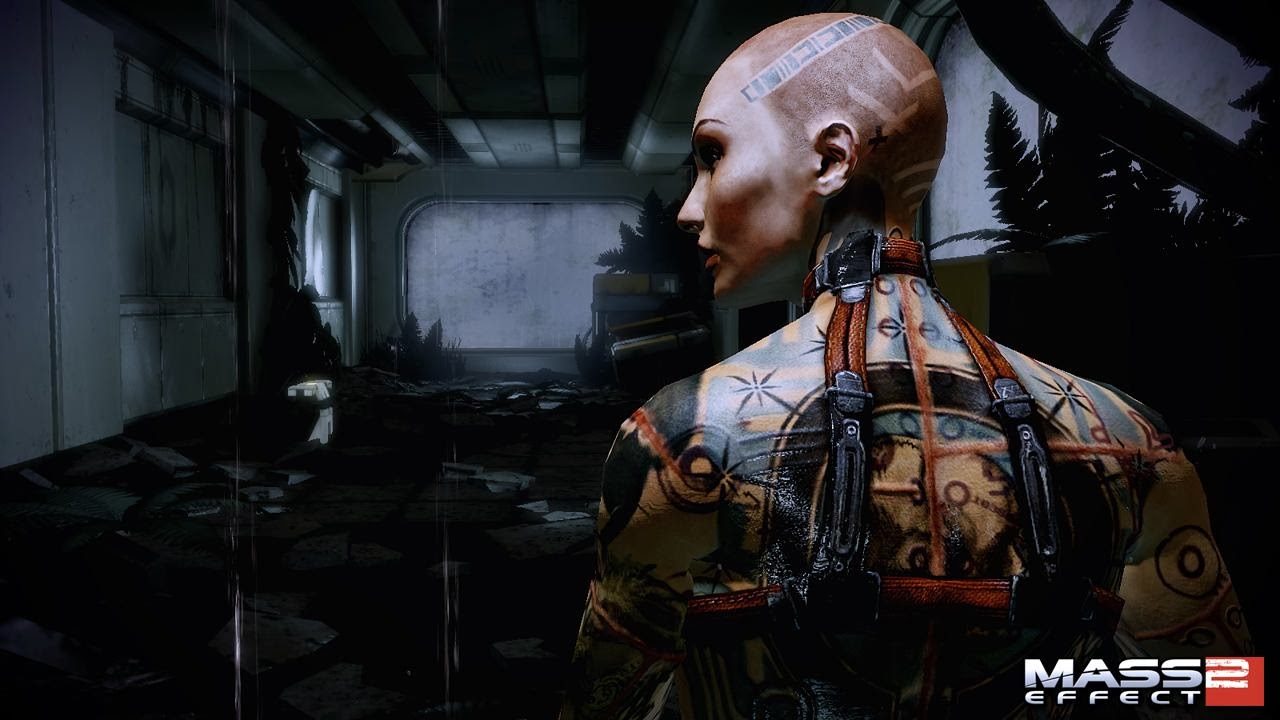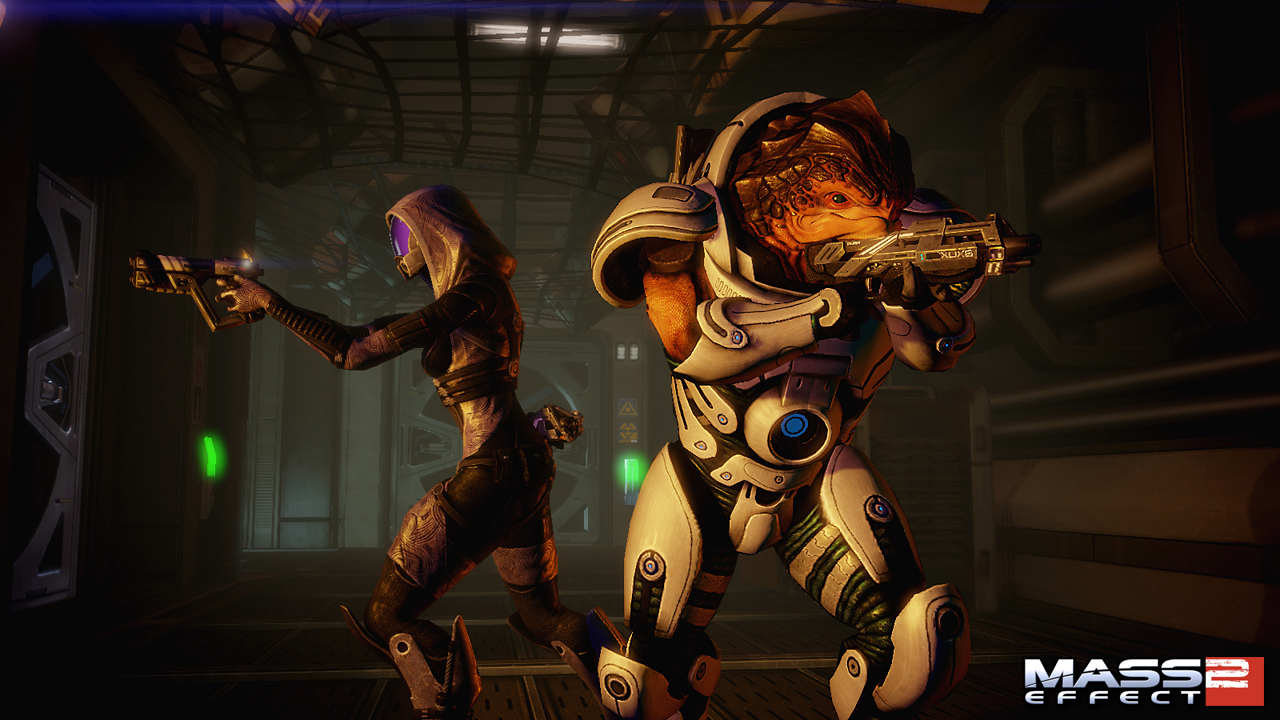Final Fantasy XIII, Square Enix/Square Enix (2010)
For a blog dedicated to narrative through gameplay, it seems contrary to place a game almost universally condemned for a lack of interactivity on a list of games of the generation.
But what I did not convey in the last entry is something that I hope will become clear as the rest of the instalments emerge: that these are my twenty favourite games, not the ones I consider either the most influential or the best. And by that entirely subjective metric, this strange tale of branded fugitives makes the list.
Final Fantasy XIII's crowning achievement is not its fluid battle system, but rather its soundtrack and art direction, which conspire to create one of the most dazzling and unique worlds gaming has ever seen.
The Final Fantasy series has never been afraid of colour, but XIII makes full use of a rainbow palette across a breathtaking array of environments, from the acidic sunlit jungle of the Sunleth Waterscape to the windswept plain of the Archylte Steppe to the neon underground prison to which our heroes are shuttled at the beginning of the story.
As impressive as the creative flair with which these places are created is the attention to detail, particularly in regard to the design of the characters and enemies. Fang and Vanille, two outlaws from the wild expanse of Gran Pulse, speak in soft Australian accents and are clad in tribal dress accented with intricately carved beads. The hundreds of enemies are all wildly imaginative, from the barnacle-covered Jabberwocky and the bizarre Munchkin to the vast Adamantoise. Not once is there a sense of repetition or homogeny during the battles.
Ah, the battles. Final Fantasy XIII eschews turn-based tactics in favour of a fast-paced real-time battle system in which the player controls only one of the three characters on screen, indirectly issuing orders to the other party members by shifting battle roles, or "Paradigms". While many fans (myself included) missed the micromanagement of earlier iterations, this system nevertheless rewards forward planning.
While earlier games allowed the less thoughtful player to simply distinguish between black and white magic, Final Fantasy XIII creates four distinct casting roles, two of which were purely tactical. While Synergists buff their party with speed spells, improved luck and resistances to certain attacks, the Sabouteurs erode enemies' defenses and created weak points where once there were none. One Paradigm Shift later, and the Synergist can become a Medic to heal the party's wounds while the Sabouteur may become a Ravager, casting destructive spells that blast the enemies' health to nothing.
The other roles, Commando and Sentinal, balance the mix with physical power and resiliance respectively. Determining when to switch roles and whom to include in each party (for not every character is equally adept at each task) is what gives the game its challenge.
It is a shame then, that Final Fantasy XIII takes so long to give the player the freedom to make mistakes. The first twenty hours of the game consist of a regimented march through Cocoon without any choice as to which characters you control. Beautiful though its environments are, corridor-like level design all but robs them of their power in the first third of the game.
One of this generation's greatest artistic failings has been the proliferation of beautiful worlds that serve as little more than backdrops for the action. While FPSs have been by far the worst culprits in this regard, seeing an RPG fall into this trap is worse due to the genre's reliance on exploration and discovery. Final Fantasy XIII does eventually give the player the opportunity to traverse the world with their choice of fighters, but with the exception of the Archylte Steppe, the environments do not open up to accommodate the improved gameplay.
Player choice is also restricted in regard to character development. Though the Crystarium might look like a web, it actually offers a very linear path through each character's skills and strengths. It's almost impossible not to create a balanced party with a defined role for each member, so the satisfaction of successfully doing so is greatly reduced. Compared to the licence board of Final Fantasy XII, which offered the player almost total freedom to make huge tactical errors that they'd have to spend hours grinding to compensate for, and it's clear that XIII erred too greatly on the side of caution.
But though these failings keep the game from greatness, Final Fantasy XIII stands out for me as delivering one of the most striking, well, fantasy worlds of the generation. With creativity more than matched by the standard of the execution, there is little to match this game in terms of big-scale, over-the-top artistry. Other games may use interactivity and exploration to far better effect in terms of world-building, but as someone who loves art and design, particularly within the fantasy genre, Final Fantasy XIII is a feast for the eyes, ears and imagination.
For a blog dedicated to narrative through gameplay, it seems contrary to place a game almost universally condemned for a lack of interactivity on a list of games of the generation.
But what I did not convey in the last entry is something that I hope will become clear as the rest of the instalments emerge: that these are my twenty favourite games, not the ones I consider either the most influential or the best. And by that entirely subjective metric, this strange tale of branded fugitives makes the list.
Final Fantasy XIII's crowning achievement is not its fluid battle system, but rather its soundtrack and art direction, which conspire to create one of the most dazzling and unique worlds gaming has ever seen.
The Final Fantasy series has never been afraid of colour, but XIII makes full use of a rainbow palette across a breathtaking array of environments, from the acidic sunlit jungle of the Sunleth Waterscape to the windswept plain of the Archylte Steppe to the neon underground prison to which our heroes are shuttled at the beginning of the story.
As impressive as the creative flair with which these places are created is the attention to detail, particularly in regard to the design of the characters and enemies. Fang and Vanille, two outlaws from the wild expanse of Gran Pulse, speak in soft Australian accents and are clad in tribal dress accented with intricately carved beads. The hundreds of enemies are all wildly imaginative, from the barnacle-covered Jabberwocky and the bizarre Munchkin to the vast Adamantoise. Not once is there a sense of repetition or homogeny during the battles.
Ah, the battles. Final Fantasy XIII eschews turn-based tactics in favour of a fast-paced real-time battle system in which the player controls only one of the three characters on screen, indirectly issuing orders to the other party members by shifting battle roles, or "Paradigms". While many fans (myself included) missed the micromanagement of earlier iterations, this system nevertheless rewards forward planning.
While earlier games allowed the less thoughtful player to simply distinguish between black and white magic, Final Fantasy XIII creates four distinct casting roles, two of which were purely tactical. While Synergists buff their party with speed spells, improved luck and resistances to certain attacks, the Sabouteurs erode enemies' defenses and created weak points where once there were none. One Paradigm Shift later, and the Synergist can become a Medic to heal the party's wounds while the Sabouteur may become a Ravager, casting destructive spells that blast the enemies' health to nothing.
The other roles, Commando and Sentinal, balance the mix with physical power and resiliance respectively. Determining when to switch roles and whom to include in each party (for not every character is equally adept at each task) is what gives the game its challenge.
It is a shame then, that Final Fantasy XIII takes so long to give the player the freedom to make mistakes. The first twenty hours of the game consist of a regimented march through Cocoon without any choice as to which characters you control. Beautiful though its environments are, corridor-like level design all but robs them of their power in the first third of the game.
One of this generation's greatest artistic failings has been the proliferation of beautiful worlds that serve as little more than backdrops for the action. While FPSs have been by far the worst culprits in this regard, seeing an RPG fall into this trap is worse due to the genre's reliance on exploration and discovery. Final Fantasy XIII does eventually give the player the opportunity to traverse the world with their choice of fighters, but with the exception of the Archylte Steppe, the environments do not open up to accommodate the improved gameplay.
Player choice is also restricted in regard to character development. Though the Crystarium might look like a web, it actually offers a very linear path through each character's skills and strengths. It's almost impossible not to create a balanced party with a defined role for each member, so the satisfaction of successfully doing so is greatly reduced. Compared to the licence board of Final Fantasy XII, which offered the player almost total freedom to make huge tactical errors that they'd have to spend hours grinding to compensate for, and it's clear that XIII erred too greatly on the side of caution.
But though these failings keep the game from greatness, Final Fantasy XIII stands out for me as delivering one of the most striking, well, fantasy worlds of the generation. With creativity more than matched by the standard of the execution, there is little to match this game in terms of big-scale, over-the-top artistry. Other games may use interactivity and exploration to far better effect in terms of world-building, but as someone who loves art and design, particularly within the fantasy genre, Final Fantasy XIII is a feast for the eyes, ears and imagination.

















































